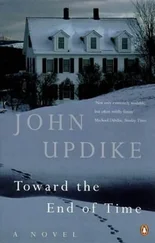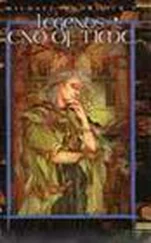EXAMPLES OF TIME CAPSULES
As a first example, we can stay within the brain but consider long-term memory. A game we sometimes play at Christmas brings out the importance of mutually consistent records held in structures. Fifty events in recent world history are written down on separate cards without dates attached. Players are divided into teams and given the cards jumbled up. The challenge is to put them in the correct chronological order. The only resource each team has to attack the task is their collective long-term memories, which every good realist (myself included) will surely agree are somehow or other ‘hard-wired’ into their brains. How each team fares depends on the consistency of its members’ recollections – the records in their brains.
This example shows clearly that all we know about the past is actually contained in present records. The past becomes more real and palpable, the greater the consistency of the records. But what is the past? Strictly, it is never anything more than we can infer from present records. The word ‘record’ prejudges the issue. If we came to suspect that the past is a conjecture, we might replace ‘records’ by some more neutral expression like ‘structures that seem to tell a consistent story’.
The relevance of this remark is brought home by the sad examples of brain damage that takes away the ability to form new memories but leaves the existing long-term memory intact. One patient, still alive, retains good memory and a sense of himself as he was before an operation forty years ago, but the rest is blank. It is possible to have meaningful discussions about what are for him current events even though they are all those years away, but the next day he has no recollection of the discussion. The mature brain is a time capsule. History resides in its structure.
After our own brains, the most beautiful example of a time capsule that we know intimately is the Earth – the whole Earth. Above all, I am thinking of the geological and fossil records in all their multifarious forms. What an incredible richness of structure is there, and how amazingly consistent is the story it tells. I find it suggestive that it was the geologists – not the astronomers or physicists – who first started to suggest an enormous age for the Earth. They were the discoverers of deep time, which did start as conjecture. And it was all read off from rocks, most of which are still with us now, virtually unchanged from the form they had when the geologists reached those conclusions. The story of the antiquity of the Earth and of its creation from supernova debris – the Stardust from which we believe we ourselves are made – is a story of patient inference built upon patient inference based upon marks and structures in rocks. On this rock – the Earth in all its glory – the geologists have built the history of the world, the universe even.
What is especially striking about the Earth is the way in which it contains time capsules nested within time capsules, like a Russian doll. Individual biological cells (properly interpreted) are time capsules from which biologists read genetic time. Organs within the body are again time capsules, and contain traces of the history and morphogenesis of our bodies. The body itself is a time capsule. History is written in a face, which carries a date – the approximate date of our birth. We can all tell the rough age of a person from a glance at their face. Wherever we look, we find mutually consistent time capsules – in grains of sand, in ripe cherries, in books in libraries. This consistent meshing of stories even extends far from the Earth and into the outermost reaches of the universe. The abundances of the chemical elements and isotopes in the gas of stars and the waters of the oceans tell the story of the stars and a Big Bang that created the lightest elements. It all fits together so well.
For me, two facts above all stand out from this miracle of nature. If we discount the direct perception of motion in consciousness, all this fantastic abundance of evidence for time and history is coded in static configurational form, in structures that persist. This is the first fact, and it is ironic. The evidence for time is literally written in rocks. This is why I believe the secret of time is to be unravelled through the notion of time capsules. It is also the reason why I seek to reduce the other hard and persistent evidence for time and motion – our direct awareness of them in consciousness – to a time-capsule structure in our brains. If I can make such a structure responsible for our short-term memory – the phenomenon of the specious present – and for the actual seeing of motion, then all appearances of time will have been reduced to a common basis: special structure in individual Nows.
The second fact that needs to be taken on board is the sheer creativity of Nature. How does Nature create this rich, rich structure that speaks to us so insistently and consistently of time? How could it and we come to be if there is no time? The appearance of time is a deep reality, even without the motion we see and the passage of time we sense in consciousness. It is written all over the rocks. Any plausible account of the universe must, first and foremost, explain the existence of the structures we see and the semantic freight (i.e. the seemingly meaningful story) that they carry.
If we can explain how they arise, time capsules offer the prospect of a much more radical explanation of the properties of time than Boltzmann’s account of the origin of its arrow. To explain the appearance of an arrow, he still had to assume a succession of instants strung out along a ‘line of time’. I have already suggested that the line may be redundant. The inference that it exists can emerge from a single Now. The instant is not in time – time is in the instant.
NOTES
The Physical World and Consciousness (1)(p. 26) There is a clear and detailed account of Boltzmann’s ideas in Huw Price’s book listed in Further Reading.
(2)(p. 27) It is worth quoting here two passages from Boltzmann himself. In 1895 he published (in perfect English—I wonder if he had assistance) a paper in Nature with the title ‘On certain questions of the theory of gases’. It ends with a truly remarkable and concise statement of what much later became known as the anthropic principle . This expression was coined in 1970 by the English relativist Brandon Carter (who had earlier made important discoveries about the physics of black holes in the period leading up to Hawking’s discovery that they can evaporate). The anthropic principle, which gained widespread attention initially through the book The Anthropic Cosmological Principle by John Barrow and Frank Tipler, expresses the idea that any universe in which intelligent life exists must have special and unexpected (from a purely statistical viewpoint) properties, since otherwise the intelligent life that observes these properties could not exist. Therefore we should not be surprised to find ourselves in a universe that does have special and remarkable properties.
In the following passage, the summits of the H curve to which Boltzmann refers correspond to states with very low entropy and high order. Note that Boltzmann credits his assistant with the idea.
1 will conclude this paper with an idea of my old assistant, Dr. Schuetz.
We assume that the whole universe is, and rests for ever, in thermal equilibrium. The probability that one (only one) part of the universe is in a certain state, is the smaller the further this state is from thermal equilibrium; but this probability is greater, the greater the universe itself. If we assume the universe great enough we can make the probability of one relatively small part being in any given state (however far from the state of thermal equilibrium), as great as we please. We can also make the probability great that, though the whole universe is in thermal equilibrium, our world is in its present state. It may be sayd [sic] that the world is so far from thermal equilibrium that we cannot imagine the improbability of such a state. But can we imagine, on the other side, how small a part of the whole universe this world is? Assuming the universe great enough, the probability that such a small part of it as our world should be in its present state, is no longer small.
Читать дальше












